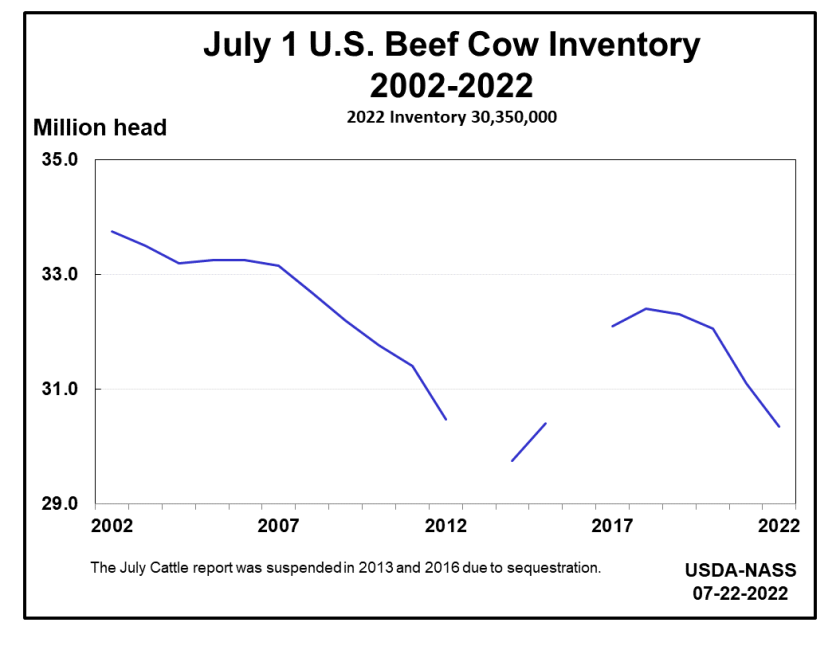SIOUX FALLS & MITCHELL, S.D. — Cattle prices are increasing as the number of cattle decrease across the country.
According to the USDA , cattle inventory is down by 3% this year, with 89.3 million head of cattle and calves on U.S. farming operations as of January 1, 2023. Beef cattle are down by 4% at 28.9 million head.
Cattle entering the ring at Mitchell Livestock Auction are selling at much higher prices than past years, however, input costs are contributing to those prices.
“The expenses have climbed just as rapid as anything has. Feed costs are quite atrocious, corn prices have gone up. We all know that. And it’s cost these producers a lot, whether it’s from renting the ground, to owning the ground to input costs to whatever, it just cost them a lot a lot of money,” said Lanning Edwards, auctioneer, Mitchell Livestock Auction.

Decreased cattle numbers are also causing a rise in the market.
ADVERTISEMENT
“I would say that’s probably most of it, just short numbers, short cattle out in the country,” said Mike Koedam, owner at Sioux Falls Regional Livestock. “You know, cattle last summer probably did better in the fall, we had a little tougher winter, which probably pushed the cattle back a little bit. Probably didn’t get them as big as they usually did.”
After years of drought, feed is still hard to find, and the conditions are contributing to the decreased cattle numbers across the country.

“A lot of cows have been sold off,” Edwards said. “Cow numbers are definitely down I think totally across the United States, between the drought and the input costs, have forced some people out of business.”

Koedam mentioned feed costs like hay and corn remain high. The USDA hay costs range from $175-$210 per ton depending on the type and quality based on a May 25 report.
Conditions are improving in some areas of South Dakota, but Edwards says we aren’t out of the drought yet.
“It’s a bit better, we are still pretty dry,” Edwards said. “We had a bazillion dollar rain here a couple weeks ago, and I will tell you what, we can use another one yesterday wouldn’t be soon enough.”
Higher cattle prices are something consumers will notice.
“Probably the price of beef is going to increase, and it will,” Edwards said. “It’s still the best product you can get over the counter or off the farm or whatever, I will take that to my grave, it’s just one of the greatest.”
ADVERTISEMENT

But as weather conditions begin to improve in some areas of the Midwest, there is hope to replenish the cattle numbers.
“There’s rain around, east of here quite a few miles, the other end of Iowa, Minnesota, into Wisconsin, getting a lot of rain, out west, I mean they need more rain, but they have been getting some, that’s a good sign, I think the numbers will replenish, but as you know that takes a little time,” Koedam said.
“It’s in Mother Nature’s hands and that’s what’s going to get the wheel turning," Edwards said. "Then when the grasses come back, the crops get producing a lot of feed supply, good feed supply, I think that will in turn help these people increase the numbers, but it’s going to take a bit."
Producers are still happy to see the higher prices at the sale barn.
“Everybody is in a little bit of a better mood,” Koedam said. “They are making some money, some cattle probably not as much as they could because of just higher feed costs, higher interest, but overall, the mentality and the mood of people is good, so that helps.”
Both Edwards and Koedam estimate it will take at least two to three years to get the cattle numbers back up to average across the country.









